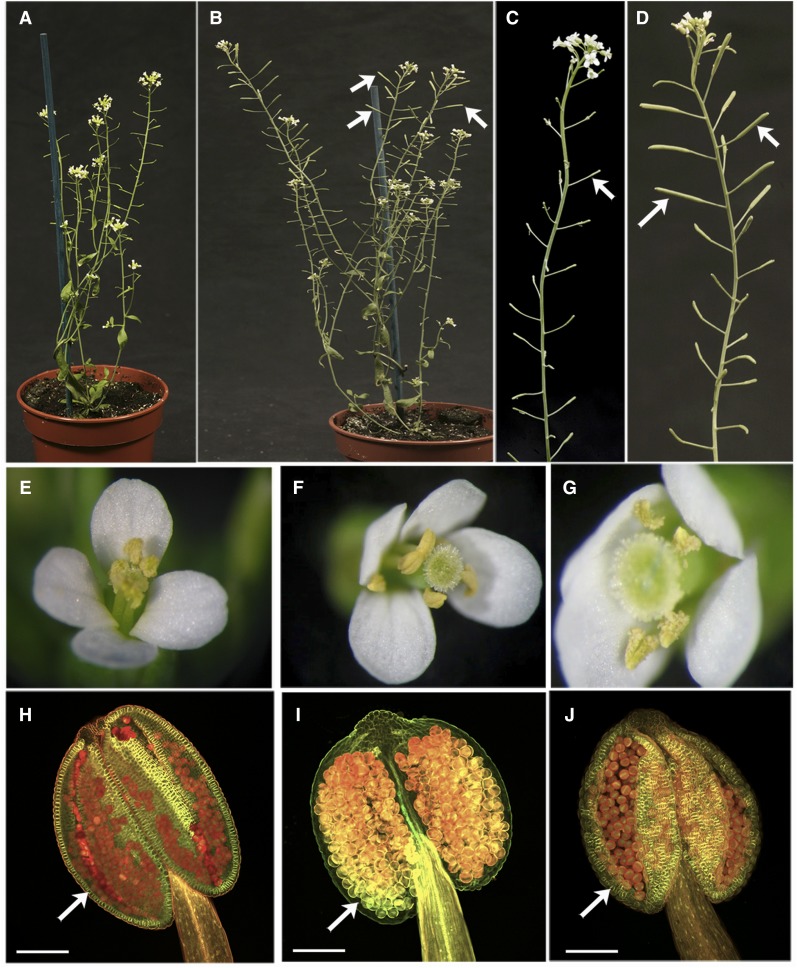Figure 1.
Rescue of fertility by DEX induction of MYB26. A, myb26 mutant carrying the MYB26pro:MYB26-GR-YFP transgene line before DEX treatment showing short, sterile siliques due to a lack of self-fertilization as a result of a failure of anther dehiscence. B, myb26 mutant carrying the MYB26pro:MYB26-GR-YFP transgene line after DEX treatment, showing rescued fertility and elongated, filled siliques on the upper region of the inflorescences (arrows); below the rescued fertile siliques were male sterile short, seedless siliques which developed before the DEX treatment. C, Close-up of the inflorescence from the transgene line before DEX treatment, showing short siliques (arrow), which do not contain seeds. D, Close-up of the inflorescence from the transgene line showing rescue of fertility and elongated, filled siliques (arrows) after DEX treatment. E, Wild-type flower showing anther dehiscence and pollen release. F, Flower from the myb26 mutant carrying the MYB26pro:MYB26-GR-YFP transgene before DEX treatment, showing a lack of anther dehiscence and pollen release. G, Flower from the myb26 mutant line carrying the MYB26pro:MYB26-GR-YFP transgene line after DEX treatment, showing rescue of anther dehiscence. H to J, Confocal images of anthers after ethidium bromide/acridine orange staining for secondary thickening. H, Wild-type anther showing lignified endothecium layer (arrow). I, myb26 mutant carrying the MYB26pro::MYB26-YFP-GR transgene before DEX treatment, which lacks endothecium secondary thickening (arrow). J, myb26 MYB26pro:MYB26-GR-YFP transgene line showing restoration of endothecium thickening after DEX treatment (arrow). Scale bars: 100 µm.

